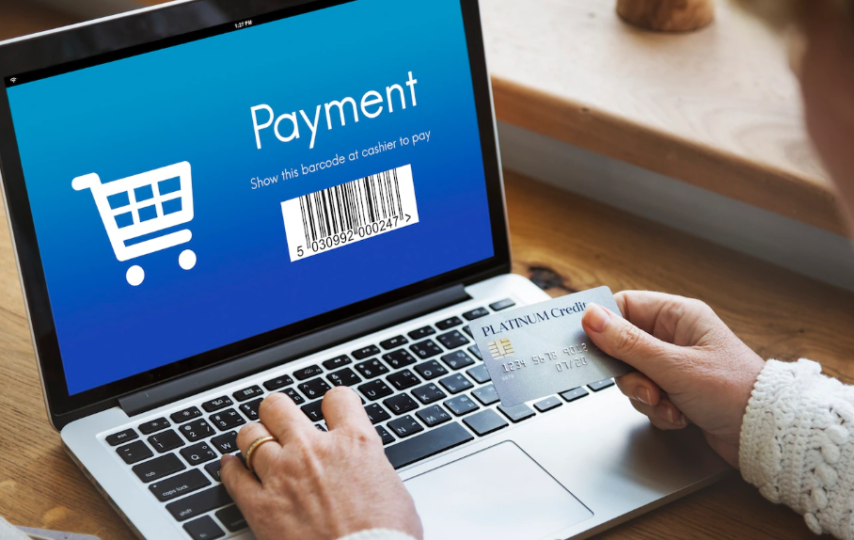Blockchain technology is a boon when it comes to decentralizing the payment industry. Financial enterprises can easily regulate their business flow using blockchain while maintaining security and transparency. And with the world undergoing a major digital evolution, the finance and payment industry has already started adopting distinctive technologies to automate payment procedures.
From accepting payments only through cash to developing cashless economies, we have come a long way. With the adoption of different modes of payment, people have started accepting the new cashless financial exchange system. People have now realized the advantages of blockchain-based payments with the mass adoption of decentralized technology.
A decentralized payment system fundamentally uses blockchain technology. Let’s look at how this blockchain transforms the global payment and financial space and its main use cases. This article will briefly guide you about blockchain payments.
What are the core benefits of blockchain in payments?
Blockchain automates fast, low-cost and secure international payment processing services and transactions via encrypted distributed ledgers. These crypto-encrypted ledgers offer trustworthy real-time verification of transactions and eliminate intermediaries like clearinghouses and correspondent banks. Since its invention, blockchain has regulated the digital currency Bitcoin. But now, people have explored many other distinctive qualities of blockchain for various real-life payment applications that do not involve Bitcoin. Blockchain payments offer the following core benefits:
Eliminates intermediaries
With the present payment system, there is a need for mediators and intermediates. One must go through several intermediaries and authorizations to make a payment, including the payment gateway, transfer mode, issuer, etc. These intermediaries provide chargeable services and increase the transaction time. In contrast, blockchain payments settle transactions seamlessly by facilitating peer-to-peer transfers and payments. They instantly develop an encrypted crypto wallet and utilize it for transfer and payments.
Different blockchain payment solutions have encouraged banks to introduce P2P transactions into their banking systems to leverage blockchain payments’ simplified transactions, quick transaction settlements and absolute elimination of intermediaries from their payment space.
Security and transparency
One of the most significant benefits of blockchain is its high-level transparency. All transactions automated through a blockchain network are:
- Immutable
- Stored on the blockchain network
- Are visible to everyone
Therefore, while making payments, users do not have to worry about saving the history of the transactions, as in blockchain, the history or the record is saved automatically via the hash system, ensuring data integrity. Every block on the decentralized network contains its hash and the hash of the block existing before the current one. They are interlinked chronologically; hence, no one can tamper with the data stored in these blocks.
Instant and secure cross-border payments
Cross-border payments occur when the payer and the payee are located in different countries. This difference in country locations makes the regulation of cross-border payment difficult in the long run. Using blockchain, people can easily regulate cross-border transactions as it takes less time to process a cross-border payment and eliminates intermediaries. Blockchain also ensures the safety of data and payments, as the transactions and data stored on the blockchain network are immutable.
Automation via smart contracts
Automation using smart contracts is one of the most important benefits of digital contracts on blockchain as they can:
- Decrease the payment duration
- Helps automate payments instantly
- Regulates the payment flow
While writing smart contracts on the blockchain network, users should specify all the terms and conditions to be met for the payment. Once all the conditions are duly met, the relevant person is paid automatically.
In the next section, let us see how blockchain implementation transforms the payment industry.
How to implement blockchain to transform the payment industry?
Following are the fundamental steps of blockchain implementation to transform the payment industry:
- Define the scope of your project and figure out a suitable approach to implement a blockchain payment system.
- Analyze and determine a front-end technology stack for front-end application development.
- Evaluate and determine a blockchain network to implement the blockchain payment system.
- Initiate the development process and finalize a highly competent development team which includes project managers, blockchain developers, application developers based on the front-end development requirements and quality testers.
- Lastly, execute your project either by yourself, or you can also hire a blockchain development team if you seek technical help for execution. In case you build a new blockchain network and crypto, you should also build infrastructure using an IaaS, a consensus algorithm and a P2P network through the latest encryption technique.
Endnote
Blockchain technology has revolutionized the payments business and continues to deliver advancements. Payments become incredibly safe when dispersed over network nodes of computers, with little possibility of tampering or data modification. Enterprises that effectively cope with the obstacles of centralized payment systems and build a committed and skilled team to install a blockchain payment system in their organization may quickly reap the benefits of its numerous advantages.
More firms are concentrating on the value of blockchain to expedite business operations, lower payment processing costs, provide additional security layers, and address potential business hazards. Public-private partnerships value decentralization because it may propel their businesses into the mainstream.
Also Visit: How Can a Healthcare Practitioner Handle Their Medical Responsibilities Effectively?



